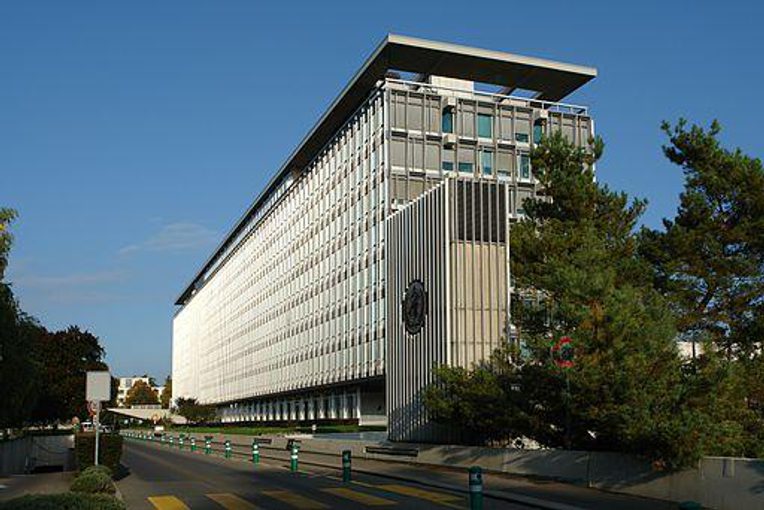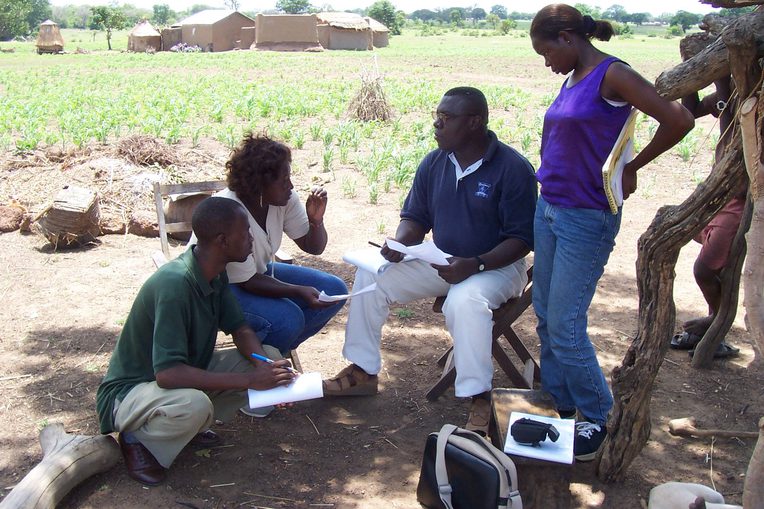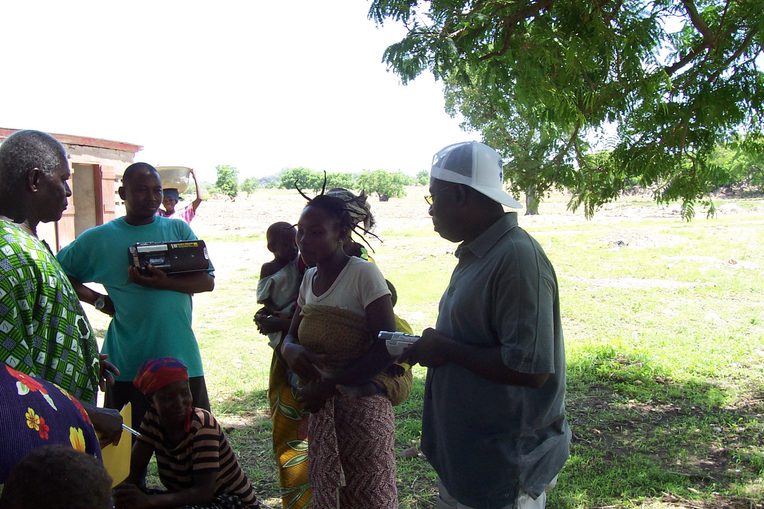This post builds on the research article “Ascertaining Deadly Harms: Aesthetics and Politics of Global Evidence,” which was published in the February 2013 issue of the Society’s peer-reviewed journal, Cultural Anthropology.

Editorial Footnotes
Cultural Anthropology has published a number of essays on medical knowledge practices. See, for example, Carlo Caduff's "The Semiotics of Security: Infectious Disease Research and the Biopolitics of Informational Bodies in the United States" (2012), Michael Montoya's "Bioethnic Conscription: Genes, Race, and Mexicana/o Ethnicity in Diabetes Research" (2007), and Mette Svendsen's "Articulating Potentiality: Notes on the Delineation of the Blank Figure in Human Embryonic Stem Cell Research" (2011).
Cultural Anthropology has also published essays on the logics of governance technologies, including Celia Lowe's "Viral Clouds: Becoming H5N1 in Indonesia" (2010), Alex M. Nading's "Dengue Mosquitoes are Single Mothers: Biopolitics Meets Ecological Aesthetics in Nicaraguan Community Health Work" (2012), and Ari Samsky's "Scientific Sovereignty: How International Drug Donation Programs Reshape Health, Disease, and the State" (2012).
Interview with Saida Hodžić
AZ: How did you arrive at studying the practice and global politics of genital cutting, and how did this study of evidence emerge from your larger research on Ghanaian efforts to end cutting?
Saida Hodžić: To the first question, I offer a meditation in fragments:
Socialism collapsed
My home country was torn apart, bled to pieces, and reconstructed
In a new language and country, I studied anthropology
Which there and then was insightful and hopeful
I was active in women's rights organizing
Which there and then was engaged and collaborative, but doggedly Eurocentric
Female genital cut--- mutilation came up
As did African NGOs, and interventions, and transnational collaborations
Anthropology had little to say about them, there and then
I wondered why
I wanted to stage an encounter
The answer to your second question is simpler. NGOs are said not to know enough, but they continuously produce knowledge – medical knowledge, knowledge about cultural forms, knowledge as evidence of their effectiveness. (The attached pictures from my fieldwork show two such moments). All these forms of knowledge allow them to (re)formulate social phenomena as objects and sites of intervention, and this is something I'm interested in and write about elsewhere. That one of the Ghanaian NGOs I studied was run by a medical doctor and an active researcher who happened to also participate in this transnational WHO study is a coincidence. When Dr. Adjei told me he would travel to Geneva, I felt that I could not not ask to go along since I wanted to follow the threads of NGOs' transnational dimensions as far as they take me. In large part then, the obstetrics study became a part of my research as a result of a contingency.


AZ: What was it like to do ethnographic research at the WHO? How did epidemiologists and doctors respond to being studied?
SH: At the time of my ethnographic research, the doctors and epidemiologists did not know what to make of me. Unlike some of my senior colleagues who work on cutting, I have not collaborated with the WHO or other international organizations. I was a graduate student then, which meant that I flew under the radar. Equally importantly, the WHO seemed to consider "culture" and "local people" as the only proper domains of anthropology, and here I was interested in the relationship between science and governance. They interpellated me as an expert on cultural terminology, asking me to comment on whether they should use the word tribe or ethnicity, and cutting or mutilation. When on a couple of occasions I participated in the discussion otherwise – on my own accord and not with respect to "appropriate" language – some people engaged me in conversation in the corridors and other informal spaces, and others signaled that I had exceeded the bounds of what was welcome. Which was fine – I was only supposed to be an observer. Later on, when I knew what to make of my research and wrote initial versions of this paper, I showed them to some of the people involved in the study and had fruitful conversations with them.
That I "was there" at the WHO and observed the production of the Lancet article is what compelled me to subsequently study its social and governmental life and what eventually led to this paper. Yet I did not spend much time at the WHO itself, and the ratio of the time of my ethnographic presence and the time I spent on subsequent research and analysis is very uneven. When I was in Geneva, I did not have a grand design or analytics in mind. I did not even know that I would try to do anything with my copious notes – I was not motivated by their potential instrumental functions. My commitment was to pushing the method as far as it would take me.
Your question leads me to some methodological considerations for an ethnography of transnational science. Unlike many lab-based science (and science studies) projects, the WHO project did not have a small number of fixed institutional locations, but was deterritorialized. The WHO was responsible for the idea, the fundraising, and the coordination of the study, but very few of the scientists were employed by the WHO or located in Geneva. They were contracted, and the labor was outsourced globally – most of the work of study design, data gathering, analysis, and writing happened elsewhere. The WHO brought everyone together a few times in Geneva, and the WHO staff traveled to the many data gathering sites consisting of multiple clinics in each of the six countries. If I were designing an ethnography of this kind of project, my methodological and theoretical interests would lead me to anchoring it in the countries where the data is gathered and following the threads from there, rather than beginning at the "center" such as the WHO. But I was not able to begin my fieldwork when the WHO was collecting the data (I was yet to complete my qualifying exams then), and so I knew that the WHO study would only be a small part of my research.
AZ: You write a very striking comparison (p. 15) between the aesthetics of infibulation and the "scientific cutting of contradictory statements" that characterizes the process of producing convincing meaning. In your fieldwork, do you find (amongst the alarmist discourses and risk discourses) examples of radically different epistemologies of cutting? What are the discursive framings that challenge this rhetorical smoothness?
SH: There are many vibrant epistemologies of cutting that challenge popular discourses. They are mainly produced by historians, anthropologists, and critical feminists (both African feminist activists and feminist scholars in Africa and in the global North), as well as by some notable legal scholars, public health scholars, and doctors. Interestingly, medical discourses about risk and harm are primarily challenged within anthropology. In the article (perhaps hidden in the footnote number 2), I have named some of the scholars who participated in the debate about evidence of harm and contested the prevailing medical and governance discourses. Most of these scholars are not anthropologists by training or employment, but they publish their articles in anthropological journals (primarily in Medical Anthropology Quarterly). Likewise, the scholars who challenged the WHO did so primarily in anthropological forums, although they come from a variety of backgrounds. So while anthropologists are often uncomfortable with the topic of female genital cutting, others turn to the discipline and demand that it accommodate critical approaches to this topic.
In my research, I have found that rural women in parts of Ghana's Upper East region who have stopped cutting produce another kind of challenging discourse to the NGOs' invocations of inevitable harm. They say that cutting is not harmful as such, but only under conditions of scarcity and precarity. Their bodies cannot afford to get cut, they say, as they are no longer strong enough to recuperate from it completely. So these women have come to see cutting as exceedingly harmful now – when their bodies suffer the consequences of severe scarcity. It's also notable that they are not opposed to all harms or risks, but only to those that are not valuable to them. And due to shifts in understandings of blood, health, and reproduction, they no longer value cutting enough to be willing to accommodate the anticipated negative consequences. Two things are important here: Their narratives shift the discourse away from the risks of cutting as such (that is, risks disembodied from the social context) and towards the socio-economic and political conditions that produce their bodies as vulnerable. And second, this is a reminder that we have much to learn from people who have been subject to biopolitical interventions. The women I worked with do not construct oppositional discourses in the sense of claiming the opposite or reverse from the dominant/popular discourses – a strategy often used by scholars – nor do they resist NGO interventions. Rather, they shift the very grounds and terms of the debate about cutting, risk, and health.
AZ: In your research about the aesthetics of evidence, what have you learned about the form(s) and meaning(s) of ethnographic writing?
SH: I would say that I have learned most about publishing in journals. There is a formal similarity between the positivistic desire for objectivity and the anthropological desire to represent complexity and nuance. Neither can be fully accommodated in journal articles because they both include excessive information and analysis. Much like the Lancet, anthropology journals also want streamlined arguments. Now, I knew this before, but I never really understood what streamlined meant until I obsessively examined the formal transformations of the WHO paper. And despite knowing it, I am apt to write otherwise again.
I also want to add that I found the explicit awareness of performativity at the WHO refreshing. I enjoyed the moments in which the epidemiologists made the regulatory aspects of forms such as the performance of objectivity obvious and toyed with them. So something that usually appears sacred to science became an object of amusement and explicit calculation. For better or worse, anthropologists are much more earnest than these epidemiologists about the norms, tastes, and values that are sacred to the discipline.
Finally, some of the lessons I learned are not directly applicable as WHO's resources are not commensurable with those of anthropologists. The WHO as an institution used significant resources to help shape the meaning of the obstetrics study and make it publicly relevant in a particular way. And while I am critical of the direction in which the WHO took this process, we could learn a thing or two from its structure.
Links
Original documents referenced in the article:
World Health Organization Study (2006) "Female Genital Mutilation and Obstetric Outcome: WHO Collaborative Prospective Study in Six African Countries" (7 pages, PDF), and the corresponding WHO press release (2006)
The complete links to the TierneyLab debate about knowledge and cutting:
A New Debate on Female Circumcision
"Circumcision" or "Mutilation"? And other questions on a rite in Africa
The influential New York Times article, "Genital Cutting Raises by 50% Likelihood Mothers or Their Newborns Will Die, Study Finds" by Elisabeth Rosenthal (2006)
Additional relevant resources:
Committee of African organizations that work on ending cutting and are major actors in this field, but do not get press coverage: Inter-African Committee on Traditional Practices (IAC)
The WHO website on "female genital mutilation"
The FGM "key issues" webpage for the organization FORWARD, founded in 1983 by Efua Dorkenoo, later hired by the WHO
"Seven Things to Know about Female Genital Surgeries in Africa" (Hastings Center Report, 2012), critiquing western media coverage of female genital modifications (9 pages, PDF). The report is authored by The Public Policy Advisory Network on Female Genital Surgeries, led by anthropologists and other scholars who participated in the WHO controversy. See page 24 of the report for a specific discussion of the 2006 WHO obstetrics study. See also a response to the Hastings Center Report by Nawal M. Nour, "Using Facts to Moderate the Message," showing a current science controversy in the making.

Questions for Classroom Discussion
1. What is the relationship between evidence, neoliberal governance, and global health? How does risk connect them?
2. One of the central analytic concepts in this article is government. What does government mean? What are some examples from the article of the two technologies of governance that Hodžić identifies through her fieldwork?
3. What are aesthetics of expertise, and how do they make something like "deadly harms" certain?

4. From the texts above (the WHO Press Release, the Lancet article, the New York Times coverage, and the NGO websites), identify words or phrases that exemplify the rhetorical structure that Hodžić describes (p. 15). Point to places in these publications where evidence of deadly harm is constructed. If the publication had more of a "pendulum" rhetorical structure, how would the text read differently? (For an example, see Hodžić’s brief textual analysis of the WHO manual for nursing students [p.8-9]).
5. What do you think Hodžić means when she references the "social life" of the WHO obstetrics study (p. 3)?
6. What evidence or information does Hodžić use to write this "ethnography of knowledge in the making"? Where do the processes by which uncertain results become meaningful facts take place?
7. How do anthropologists participate in debates about genital cutting? After researching anthropologists' participation, consider some of the ways they might expand their participation in debates about institutional or governmental interventions in genital cutting and other practices.